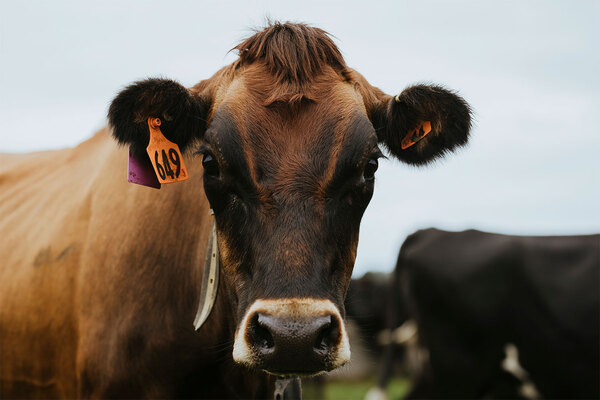Measles, a highly contagious viral infection, has been a significant public health issue for centuries. While we now have vaccines to control its spread, the origins of this virus are still a subject of scientific investigation. A key question many ask is, what animal did measles come from? Understanding the zoonotic origins of measles can provide valuable insights into how the virus emerged, evolved, and became a human-specific pathogen.

Measles is caused by the measles virus (MeV), a member of the Paramyxoviridae family, specifically the genus Morbillivirus. It is one of the oldest known infectious diseases, with descriptions of symptoms dating back to the 9th century. Before the advent of the measles vaccine in the 1960s, the virus was responsible for millions of deaths worldwide, particularly in children.
However, the story of measles begins long before it became a human disease. To understand its origins, we must trace its evolutionary history back to the animal kingdom.
Research suggests that measles likely originated from an animal virus, specifically from cattle. Scientists believe that the measles virus evolved from a close relative called the rinderpest virus (RPV), which primarily affects cattle and other ruminants.
Rinderpest was a highly contagious viral disease in cattle, causing high mortality rates. For centuries, it devastated livestock populations across Europe, Africa, and Asia, affecting food security and economies dependent on agriculture.
Genetic analysis has shown that the measles virus and rinderpest virus share a common ancestor. It's estimated that these two viruses diverged from one another around 1,000 years ago, likely around the time humans started to domesticate cattle in larger numbers.
The increased contact between humans and cattle, especially in densely populated areas, facilitated the jump of rinderpest virus from cattle to humans. Over time, the virus adapted to its new human host and evolved into what we now recognize as the measles virus.
Measles is an example of a zoonotic disease, meaning it originated in animals before making the jump to humans. When the rinderpest virus infected early human populations, it likely caused sporadic outbreaks. Over time, the virus adapted to human cells and became more efficient at spreading between humans, leading to sustained transmission.
Several factors contributed to the successful transition of the measles virus from animals to humans:
Domestication of Animals: The domestication of cattle played a pivotal role. As human populations grew and settled into more permanent agricultural societies, the close interaction with domesticated animals like cattle increased the likelihood of cross-species transmission of viruses.
Urbanization: As populations grew, especially in cities, humans lived in close quarters, which provided the ideal environment for the virus to spread. Measles, like many respiratory viruses, spreads through aerosol droplets, making it highly contagious in crowded conditions.
Human Immune Systems: Once the rinderpest virus made the jump to humans, it had to adapt to the human immune system. This process likely took many years, but eventually, the virus evolved to a point where it could efficiently infect humans and cause outbreaks.
Long-Term Adaptation: Over generations, the measles virus became fully specialized in infecting humans. Unlike some zoonotic viruses that continue to infect both animals and humans (such as influenza), measles became human-specific, meaning it no longer relies on animal hosts for transmission.
While measles remains a concern, its relative in the animal world, rinderpest, has been completely eradicated. In 2011, the World Organization for Animal Health (OIE) and the Food and Agriculture Organization of the United Nations (FAO) declared rinderpest officially eradicated, making it only the second disease (after smallpox) to be eliminated through vaccination efforts.
The eradication of rinderpest was a significant milestone in veterinary and agricultural history, demonstrating that coordinated global vaccination programs can effectively eliminate a virus. This victory over rinderpest serves as inspiration for global public health efforts to eliminate measles as well.
Historically, measles has had a profound impact on human populations. The virus can cause severe complications, including pneumonia, encephalitis, and death, particularly in malnourished children or those with weakened immune systems.
Before vaccines, measles epidemics would sweep through communities, especially in densely populated cities. The virus thrives in areas where there are enough susceptible individuals to sustain transmission. This is why measles tends to resurge in communities with low vaccination rates.
The introduction of the measles vaccine in 1963 dramatically reduced the incidence of the disease. Vaccination has proven to be the most effective tool in controlling and preventing measles outbreaks. In many parts of the world, the virus has been nearly eliminated, thanks to high vaccination coverage.
However, measles remains a global health threat, particularly in regions with low vaccine uptake. Outbreaks can occur when the proportion of vaccinated individuals drops below the herd immunity threshold (approximately 95%). This can lead to resurgences of the disease, even in countries where measles was once considered eliminated.
The evolution of the measles virus from rinderpest serves as a cautionary tale about the risks of zoonotic diseases. As humans continue to interact closely with animals through agriculture, hunting, and habitat encroachment, new viruses can potentially jump to human populations.
Studying the origins of measles and rinderpest highlights the importance of surveillance and control of zoonotic diseases. Early detection and vaccination efforts are crucial in preventing the next pandemic from emerging.
The measles virus has a fascinating history rooted in the animal world. It likely originated from the rinderpest virus in cattle, making the jump to humans as agriculture and domestication became widespread. Over time, the virus adapted to humans and became the highly contagious pathogen we know today.
Understanding the animal origins of measles not only provides insight into the virus's evolution but also underscores the importance of vaccination and disease prevention efforts. While rinderpest has been eradicated, measles still poses a threat, making it all the more important to continue public health initiatives aimed at global eradication.
We created this article in conjunction with AI technology, then made sure it was fact-checked and edited by a Animals Top editor.